The Centre might be creating EV-friendly policies to secure India’s green future, but a man who lost his six-year-old to an EV fire in September isn’t convinced. Automobile experts say tech is still too nascent and far from foolproof
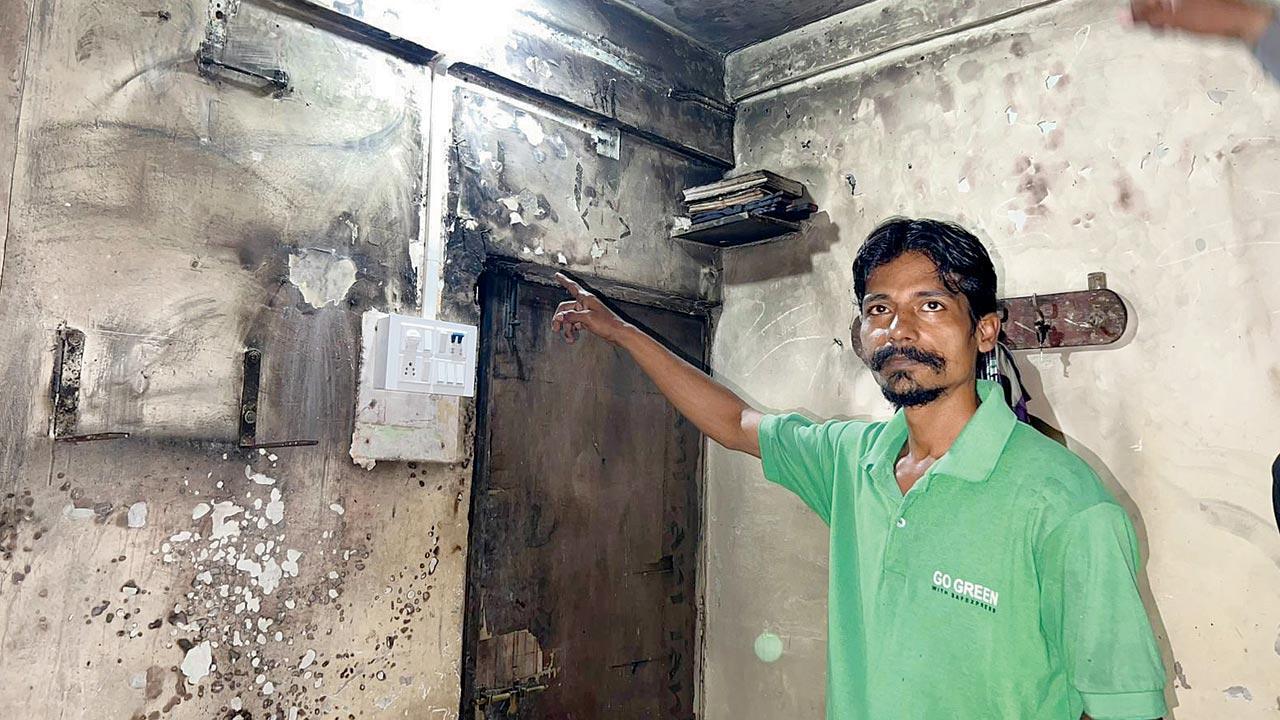
Shahnawaz Ansari, 35, lost his six-year-old son in September to an EV battery blast at his home in Vasai. Experts say that charging your battery inside the house is a “recipe for disaster”, as one two-wheeler battery can draw current equivalent to three air conditioners. Pics/Hanif Patel
On October 20, the day this writer made a call to Vasai resident Shahnawaz Ansari, his home was enveloped in a blanket of gloom. “My son would have been seven today,” he tells us. More than angry, his voice indicates that he is bereft of hope. On September 30, Ansari’s son succumbed to burn injuries after his electric bike battery exploded in the living room. His son was sleeping there when the incident occurred. Ansari had bought the Batt:Re LO:EV, an entry-level scooter for R82,000 in August 2021—the rise in fuel prices made it unaffordable to own anything else. “The government was also supporting use of Electric Vehicles, so I thought it was a reliable option,” adds the 35-year-old, who works as a driver for a transport company. His e-scooter had a removable battery, which he had plugged in for charging. “The bike manual mentioned charging the battery for three to three-and-a-half hours. I kept it for charging at around 3 am and went to sleep... it had been around two hours when all of a sudden, it exploded,” he recalls.
Investigations are still on in the case. Ansari is hoping for a settlement with the company. If that doesn’t happen, he will give the two-wheeler to a scrap dealer. One thing he is sure of: “I won’t buy an e-bike ever again.”
ADVERTISEMENT

Ansari’s disappointment is being felt by many Electric Vehicle (EV) owners in the country. In the last one year, there has been a spike in incidents of EVs catching fire. This has also dented the central government’s plans to boost the EV ecosystem, as part of its goal to achieve net-zero emissions by 2070. Finance Minister Nirmala Sitharaman in the 2022 Union Budget had proposed a battery swapping policy to support EV manufacturers. NITI Aayog, the nodal agency tasked with catalysing economic development, even introduced the draft battery swapping policy in April this year, “to level the field across business modes for EV sales with fixed or swappable batteries”. That same month, six fire incidents were reported across the country, which led the NITI Aayog to formulate a team of independent experts to investigate these cases. Union Minister of Road Transport and Highways Nitin Gadkari, while issuing orders to recall defective EVs, had announced that any EV company found to be negligent with customer safety would be penalised.
In June this year, a Tata Nexon EV that caught fire at an intersection on Vasai Road, was reportedly the first case involving an electric car in the country.
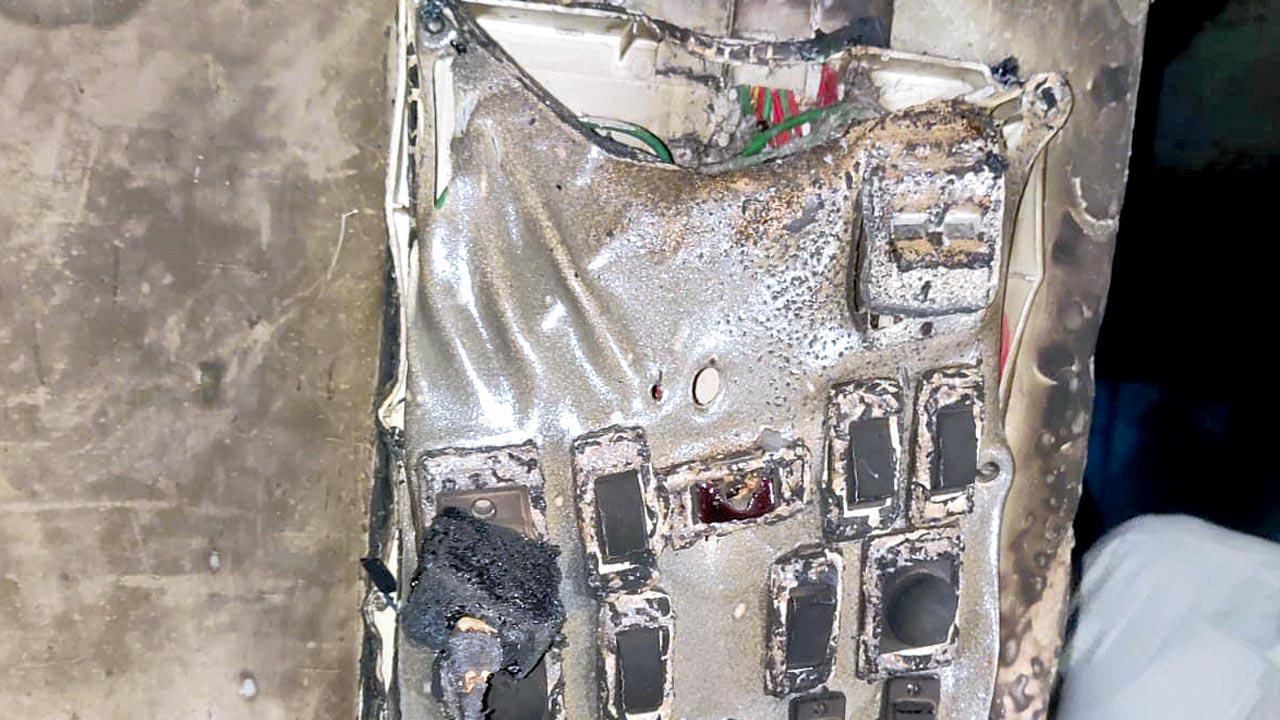
Hemant Parab, Chief Fire Officer, Mumbai Fire Brigade, BMC, admits that EV fires are difficult to tackle, because the technology used is still novel. Speaking with mid-day, Parab says that at present, there is no mechanism to douse EV fires, besides pouring a generous amount of water. “And there’s no calculation on the volume of water required either. It all depends on the intensity of the fire,” adds Parab. “Even if it [the fire] is extinguished, there are chances of it restarting, sometimes even after an hour, and that is more dangerous.” A Tesla, which caught fire in Colorado, US, in June last year, according to a report, required 28 firefighters, seven hours and 28,000 gallons (1,27,290.52 litres) of water—the same amount of water which serves an average American home for two years—to douse it. A typical fire involving an internal combustion car can be put out using approximately 300 gallons (1,135.62) of water.
Rohit Paradkar, who has been an automotive journalist for 17 years, says that EV tech hasn’t reached its full potential yet. “When we compare the number of fuel-run vehicles that put out CO2 emissions daily to the water needed to douse the not-so-frequent EV fires that happen once in a while, the debate about which is more taxing wouldn’t even hold.” He believes that the discourse about EVs not being environmentally-friendly, would only arise if we had one out of every five or 10 incidents of EVs catching fire.
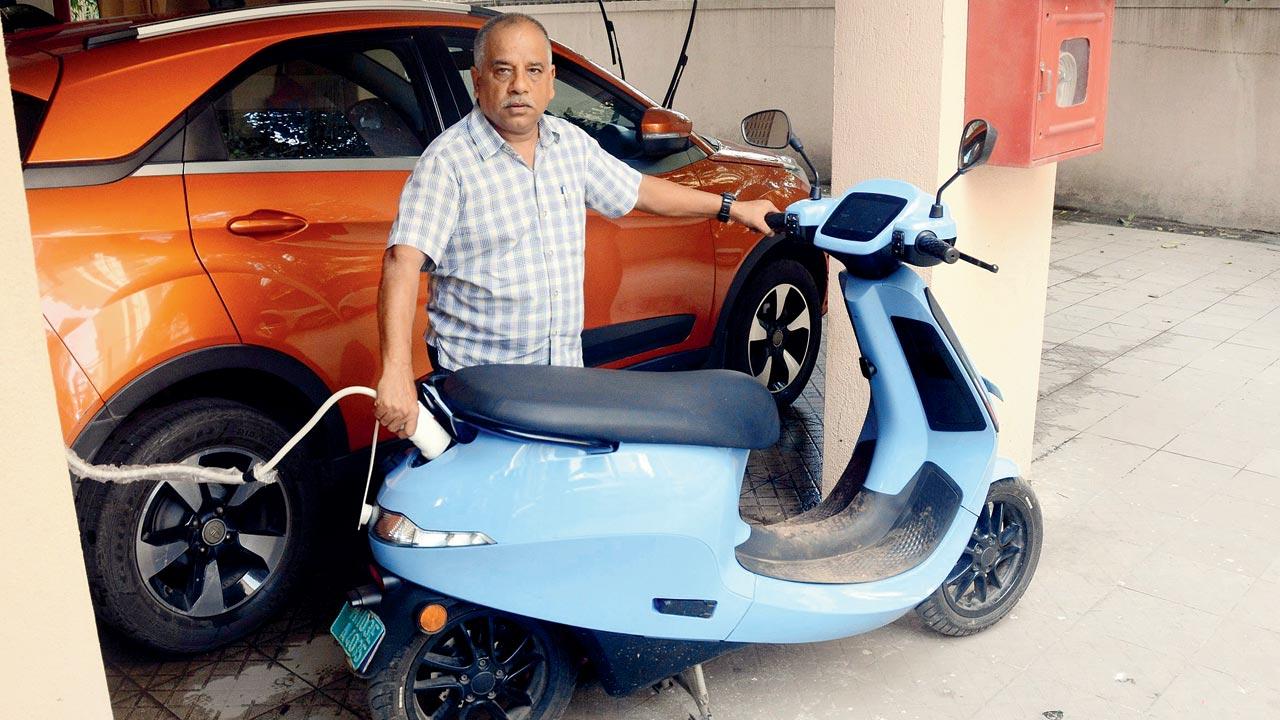 Rajendra Awasthi bought his Ola E-scooter in August this year because he felt it was a known brand. The EV scooter has an indicator, which a lot of companies have now started to install after seeing an increase in EV fires. Pic/Sayyed Sameer Abedi
Rajendra Awasthi bought his Ola E-scooter in August this year because he felt it was a known brand. The EV scooter has an indicator, which a lot of companies have now started to install after seeing an increase in EV fires. Pic/Sayyed Sameer Abedi
Andheri-based Aneesh Bhasin has been using a Tata Nexon EV for the past seven months. According to him, EVs are cheaper and better in terms of drivability. Bhasin wasn’t aware of the reports about EVs catching fire, until this writer brought it up. His only grouse is the lack of charging stations in the city. “Even the company’s website didn’t have a lot of information or a manual on what to do, what not to, and where to charge in public,” he says.
A spokesperson at Tata Motors admits that this is a problem. They have been facing four key barriers in this segment. “A price premium, charging infrastructure, range anxiety [a driver’s fear that a vehicle has insufficient energy storage to cover the road distance needed to reach the intended destination] and limited choices. Therefore, our strategy has been to position EVs as not just as an alternate drivetrain option, but as a primary mode of travel that provides superior drive and ownership experience.”
According to experts, lithium-ion batteries used in EVs are the primary reason for them catching fire. “Given the significantly smaller space a two-wheeler provides compared to a car, designing a robust thermal management or cooling system is very challenging and therefore the risk of overheating and fires is a lot higher [in two-wheelers] compared to electric cars,” explains Paradkar.
 Hemant Parab, Chief Fire Officer, Mumbai Fire Brigade, BMC
Hemant Parab, Chief Fire Officer, Mumbai Fire Brigade, BMC
Moreover, “the technology for four-wheeler EVs has been around for a while in European countries and the US, whereas two-wheelers and three-wheelers are new. Indian brands are still evolving and working from scratch on the technology for these vehicles,” says Sheetanshu Tyagi , co-founder of Emo Energy, which is based out of Bengaluru and has its factory in Mysore.
Emo is a deep-tech mobility firm that is building safe and powerful battery packets to enable mass EV adoption. The team is working on designing a battery solution, which is an integrated battery plan to avoid, prevent and douse fires. They work with OEMs (Original Equipment Manufacturer) and have come up with a design for two-wheelers and will be rolling out something for three and four-wheelers soon. “It is a three-fold problem,” says Tyagi, speaking about EV fires. “The temperature outside is a big reason. The second is charging, which includes not being able to charge, overcharging and poor detection of charging; the third is short circuit.”
 Vikas Yogi, Rohit Paradkar and Rishi Aggarwal
Vikas Yogi, Rohit Paradkar and Rishi Aggarwal
Using unauthorised chargers can also result in a fire, says Vikas Yogi, an automotive journalist, who runs an online portal called India Car News. “Buying chargers off the shelf is unsafe. They need to be tested and need approval before being used,” he says.
At present, batteries are sourced mainly from China, Taiwan and South Korea. “A battery will react differently in different regions, based on the external environment [extreme cold, humid or hot],” says Yogi. “If a company has done its R&D in Europe—which has a different climate than India—it will have to go through all those R&D steps in India, too. The battery management system needs to be tweaked, according to our needs here,” he explains.
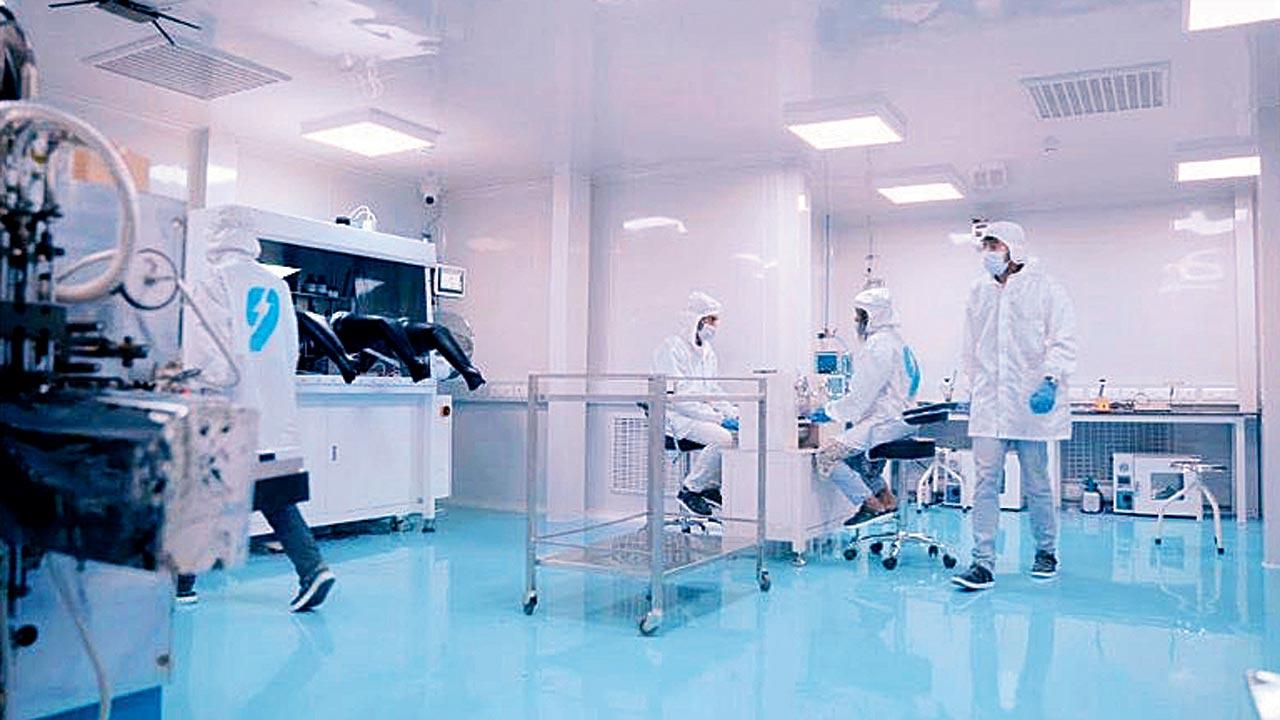 Seven-year-old Log9 Materials claims to be the only Indian company that manufactures LTO (lithium, titanate and oxide) batteries, which are the safest and do not catch fire
Seven-year-old Log9 Materials claims to be the only Indian company that manufactures LTO (lithium, titanate and oxide) batteries, which are the safest and do not catch fire
Tyagi says foolproof thermal management or a thermal runaway protection system can help counter the problem. Thermal runaway is the scenario where one cell ignites for another reason and then propagates that energy to other cells, thus causing a devastating chain reaction. Tyagi’s company Emo specialises in preventing thermal runaway. “We have special materials along with a fluid within the battery that absorbs and prevents transfer of energy to adjacent cells. Our thermal system detects well in advance and allows prevention and mitigation against fires.”
Tata Motors told mid-day that currently, they have more than 45,000 EV cars on Indian roads. “Tata Motors is working towards battery protection. Battery protection comes from numerous aspects, including durability, thermal, geometric, and external impacts. To make the battery completely durable, a number of ageing tests are run specifically through a series of cycles designed to stress-test the batteries. This gives us accurate data on the deterioration pattern, and we are able to feed this back, to run optimisation loops for improving them,” the spokesperson said in an email interaction.

Pankaj Sharma, co-founder of Log9 Materials has been working in the space of batteries for the past seven years. The company is spearheading the manufacturing of premium lithium-ion batteries in India. He says that an EV battery can be described by its chemistry. There are three major lithium-ion cells in the market—namely NMC (a combination of nickel, magnesium and cobalt), LFP (lithium, ferrous and phosphate) and LTO (lithium, titanate and oxide). Out of the three, NMC is the cheapest and widely available and can be bought from China at a good price, says Sharma. “In India, most EVs were on NMC, but they are now slowly moving to LFP,” he says.
According to him, NMC batteries can catch fire easily. Once they reach a temperature of 60-70 degrees Celsius, NMC cells have a reaction and that in turn increases the temperature of the cells to anywhere between 100 and 200 degrees Celsius. “This makes it one of the trickiest cells to control.” LFP batteries release smoke when they hit 175-180 degrees. The safest in chemistry is LTO. “They don’t catch fire and neither release smoke. They can go up to 200-210 degrees,” adds Sharma, who says his company is the only one in the country that specialises in LTO batteries.
 Emo Energy, founded a year ago by Sheetanshu Tyagi and Rahul Patel, has its headquarters in Bengaluru and their factory in Mysore. Their work involves building safe and reliable battery packs for lighter electric vehicles
Emo Energy, founded a year ago by Sheetanshu Tyagi and Rahul Patel, has its headquarters in Bengaluru and their factory in Mysore. Their work involves building safe and reliable battery packs for lighter electric vehicles
NMC also has high-cell density, which stores more energy in each cell. “In NMC,” says Sharma, “You get three things—cheaper price, better energy density and better supply in the market.” A two-wheeler NMC battery of 2 kilowatts would cost around R20,000, whereas the LFP battery would be 20 per cent higher and an LTO battery would be 1.6 times that of NMC.
That’s why the choice of chemistry by the battery manufacturer and the vehicle manufacturer is important, Tyagi and Sharma feel.
 Sheetanshu Tyagi and Rahul Patel
Sheetanshu Tyagi and Rahul Patel
Rishi Aggarwal, environmentalist and director at Mumbai Sustainability Centre, however, highlights a more long-term environmental impact of these batteries. “First, is the mining of precious minerals such as nickel, magnesium and others to manufacture these batteries. The other issue is the recyclability of the lithium-ion battery. After 10-20 years, when all these batteries get discharged, how will we recycle them?” he asks.
Tyagi is hopeful that the EV fire incidents will come down over a period of time. But precaution is going to be key.
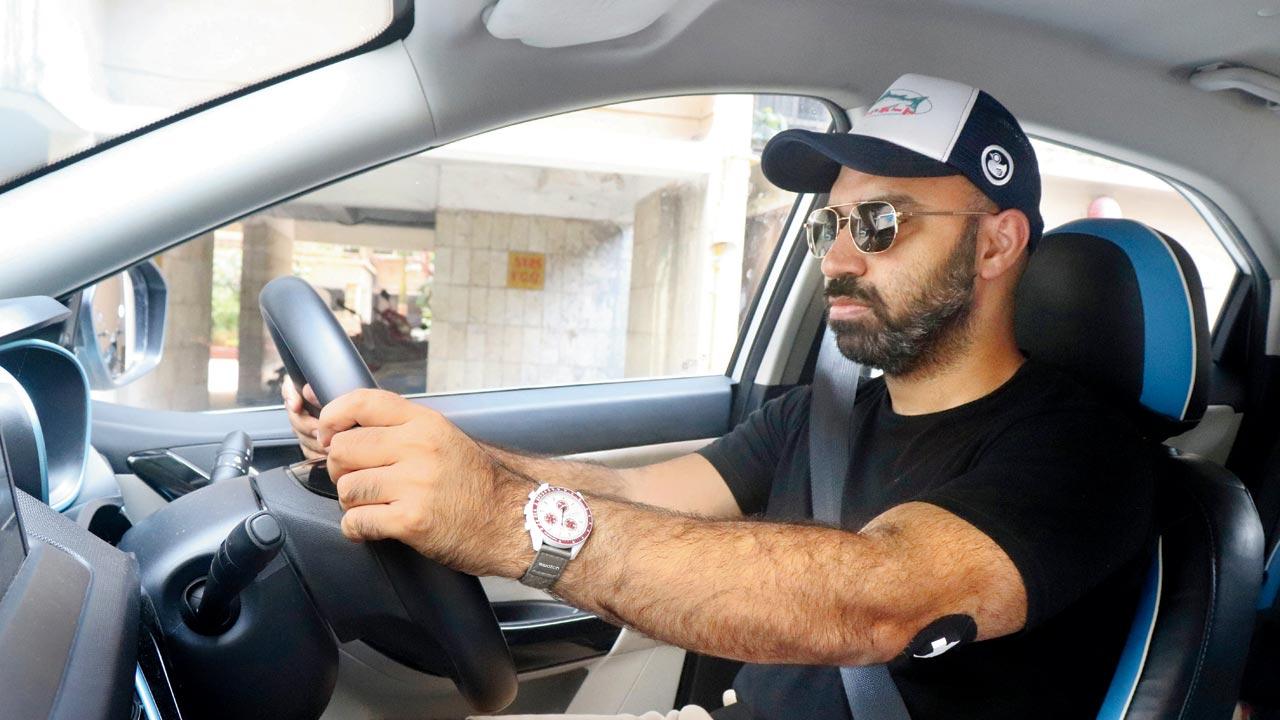 Entrepreneur Aneesh Bhasin opted for a Tata Nexon EV seven months ago; “it was reliable and economical,” he says. His only grouse is that there aren’t enough EV charging stations in the city. Pic/Anurag Ahire
Entrepreneur Aneesh Bhasin opted for a Tata Nexon EV seven months ago; “it was reliable and economical,” he says. His only grouse is that there aren’t enough EV charging stations in the city. Pic/Anurag Ahire
For starters, Sharma of Log9 Materials says don’t charge batteries at home—“it’s a recipe for disaster”. “Home is not a charging station and it was never designed to charge a battery. One two-wheeler battery can draw a current equivalent to three air conditioners at peak power. If you try to take that much energy, the wiring at home will melt and it would result in a fire or a short circuit.”
Sharma suggests developing tech to make this possible, like an indicator to show when the temperature rises. Besides the alert system, there should also be auto shutdown protocols. “We don’t have to wait till it catches fire—you should be able to get an advance alert,” says Sharma.
Chembur-based Rajendra Awasthi bought the Ola S1 Pro E-scooter in August this year. His EV scooter has an indicator. “Ola is a well known brand and it was more expensive than other e-scooters, so we assumed there wouldn’t be any compromise on safety,” he says.
Despite these fire incidents, customers are continuing to invest in EVs post the pandemic in India. Collectively, experts in the industry believe that the government should be more stringent with its laws, guidelines and norms when it comes to EV batteries. “The Government of India needs to come up with training on firefighting lithium-ion fire. The firefighter should be aware of how to treat it based on which cell. Instead of water they should have other inert materials,” says Sharma, adding that there are advanced extinguishers in the market. “But they are not easily available and are in the higher price range.”
Yogi believes that the Automotive Industry Standard (AIS) 156 guidelines laid down by the Ministry of Road Transport and Highways should be implemented more stringently as “it is the most comprehensive and toughest test out there”. The guidelines in AIS 156 were enforced to strengthen the safety parameters for the testing of the batteries used in EVs and part of the amendment was implemented October 1 onwards. Sharma says, “The good news is that manufacturers have already started going back to the drawing board. The tech is only going to get better.”
06
No. of incidents of EVs catching fire reported in April this year
1.27 L
Litres of water used to douse the flames of a Tesla that caught fire in Colorado
What causes fire incidents in EVs
. Using more temperature-sensitive battery chemistry called NMC
. Overcharging batteries or charging them at wrong intervals
. Not charging it at designated charging stations which leads to short circuit
. Using unauthorised chargers
. Buying an EV from an unreliable brand
 Subscribe today by clicking the link and stay updated with the latest news!" Click here!
Subscribe today by clicking the link and stay updated with the latest news!" Click here!








